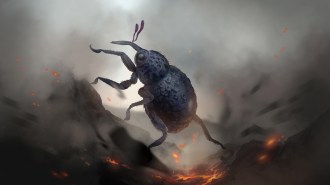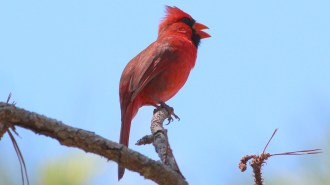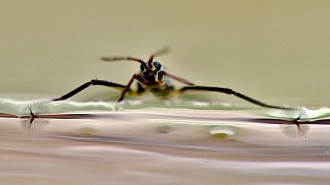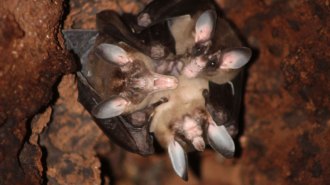Uncategorized
-
 Artificial Intelligence
Artificial IntelligenceCan fake faces make AI training more ethical?
Demographic bias gaps are closing in face recognition, but how training images are sourced is becoming the field’s biggest privacy fight.
By Celina Zhao -
 Health & Medicine
Health & MedicineShifting vaccine guidelines inject uncertainty into getting fall COVID shots
Respiratory viruses often surge in the fall. We asked an infectious diseases expert how best to protect ourselves given a shifting vaccine landscape.
-
 Animals
AnimalsThe phoenix isn’t the only critter to survive the flames
There are no real phoenixes hiding anywhere. But science has revealed that some living things can take quite a bit of heat.
-
 Animals
AnimalsAround the world, birds sing longer in light-polluted areas
In light-polluted landscapes, birds' singing time is an average of 50 minutes longer per day. It's still unclear if this hurts bird health or helps.
By Jake Buehler -
 Animals
AnimalsFrilly bug feet inspire a water-striding robot
Ripple bugs’ nimble movements on the surface of water inspired a robot with automatically unfurling fans on its feet.
-
 Space
SpaceThe Vera Rubin Observatory is ready to revolutionize astronomy
Sporting the world’s largest digital camera, the new telescope is poised to help solve some of the universe’s biggest mysteries.
-
 Health & Medicine
Health & MedicinemRNA vaccines hold promise for many diseases. Now the tech is under fire
Researchers warn that halting federal contracts for mRNA vaccine research could weaken pandemic preparedness and slow medical advances.
By Meghan Rosen -
 Animals
AnimalsThese giant carnivorous bats hug, cuddle — and even share dinner
Infrared cameras in Costa Rica revealed that the world’s largest carnivorous bat maintains close social bonds through wing wraps and prey sharing.
By Jay Kakade - Astronomy
A dying star revealed its heart
Before exploding, a star shed most of its layers, giving a glimpse at a massive star’s deep interior. The event may represent a new kind of supernova.
-
 Health & Medicine
Health & MedicineMeasure blood sugar with a grain of salt
Continuous glucose monitors are now readily available. With guidance, they can help people make small dietary and lifestyle changes for better health.
By Sujata Gupta -
 Math
MathSee how fractals forever changed math and science
Over the last half 50 years, fractals have challenged ideas about geometry and pushed math, science and technology into unexpected areas.
-
 Health & Medicine
Health & MedicineCould babies get bird flu through breast milk? Maybe, a study hints
H5N1 bird flu might infect human mammary glands, potentially allowing the virus to show up in breast milk.